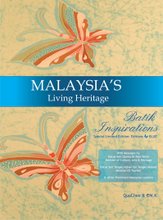If any of you have photographer friends, you'll know that they could be quite opinionated when it comes to photographs.
We've had our fair share of encounters. And being photographers ourselves, we too could be a lil hard on our opinions at times. Well, all these is simply because 'beauty lies in the eyes of the beholder'.
However, we are proud to say the least, that my encounters with photographers on this book has been relatively more positive than negative - professionals to amateurs and hobbyists.
The aspects that they have mentioned include the composition whereby the focus or object is given good emphasis with its surrounding supporting it well. Take an example of a photo from the book 
As you can see here, the focus is the models, but the staircase gives a good 'feel' and added atmosphere to the picture. Some people have even mentioned that the wall at the back has added the special touch to it, as its old rustic look. Not to mentioned the soft light approach adds to the whole mood, as if the models are going for a batik party!
Some photographers like the mixture of both batik and its background, giving a somewhat Malaysian feel - and which is not too old, neither too modern, but just a good blend.
Of course, many complimented the background aspects. Unlike many photographs from magazines, backgrounds are normally less intricate & detailed, this book however have background that are very unique, and to some very rich in details itself. If not careful, this can overshadow the object of the photographs.
However, eM.K. and myself had similar ideas & discussions on focusing directly on the models parading the batiks... and hence, that is what readers see when they first see the pictures - not the Peranakan (Baba Nyonya/ Straits Chinese) tiles, the colonial buildings or the paintings on the Chinese temples, but instead they first see the beautiful & bold colours of the vibrant batik.
Some photographers have even asked us pertaining to our photography works like where is our studio, how long are we in the trade, etc... and are truly amazed to say that we did this as the very first project, though eM.K. has vast experience in photography, taking photographs especially in events.
The compliments from photographers gives weight to our work. And we feel honoured when they genuinely like the book. In fact, when a photographer like the book, they will really appreciate it and will tell you all the reasons they like it. That, to us, is another feather on our caps :)
<
Sunday, September 23, 2007
Photographer's Book
Posted by
Unknown
at
1:36 PM
![]()
Labels: photography
Subscribe to:
Post Comments (Atom)






3 comments:
Batik is Javanese, not Malay. 'Batik' is Javanese langauge ('ngoko' strata term) meaning to 'detik'- to draw dots or 'dotted' It would be more intellectually honest if you correctly attribute the origins of Batik to Java- as Malaysia is merely a British colonial construct and its' territories former Javanese & Thai vasselages moreover Malay are truly Mingang/Batak ethnicity.
But proof is tha Javaneese batil remains far superior to all.
Malay or 'boso Melayu' is Batavia slang patois that is why so many Javanese low-strata words such as (pun)apa(pun), anda, etc are used.
Please do not be a typical Malay abnd plagiarise your larger, more powerful and more cultured neighbour.
Hi there.
I normally would not publish such comments, as firstly its not related to my post at all.
But, Im posting up your comment as I would like to share your view to other readers.
Frankly, I love Indonesia, and I admit you are a very cultured country - from Java to Bali, etc.
And I think your batiks are very well done. To me, Batik Indonesia is unique by itself, and so is Batik Malaysia, though I must say they are both very different. And that makes them both special!
Let's not compare - why should we? I love both Batik Indonesia, and Batik Malaysia... and I've personally met a few batik artists from your country and even the management of the Batik body there.
We should work together in promoting batik as one :)
Yes, batik started in Java around 1930, the 'real' batik production started, stamping with wax directly on the fabric. (Source: Arney 1987). Then it was innovated to many beautiful designs like Tjanting. Yes we should all play our part in promoting this art and take them to the next level
Post a Comment